Operations Report – March 17th
SOL: 1
Name of person filing report: Tom Baldwin
Non-nominal systems: Rover charging system.
Notes on non-nominal systems: Circuit to charging system interrupted, reset by David Mateus
Generator (hours run): 11
Solar— 81 % (Before generator is run at night)
Diesel Reading – 65 %
Propane Reading – 68 %
Ethanol Free Gasoline – gallons.
Water (auxiliary tank) – 0 gallons
Water (static tank) – 350 gallons
Auxiliary to Static tank transfer– no
Gallons transferred:
Water in GreenHab – 181 gallons
Water (loft) – Static to Loft Pump used – yes
Water Meter: 12 units
Toilet tank emptied: no
Deimos rover used: no
Hours:
Beginning charge:
Ending charge:
Currently charging:
Sojourner rover used: ASSIGNED TO DIRECTOR
Hours:
Beginning charge:
Ending charge:
Currently charging:
Spirit rover used: yes
Hours: 83.6
Beginning charge: 48
Ending charge: 46
Currently charging: yes
Opportunity rover used:
Hours:53.6
Beginning charge: 58
Ending charge: 56
Currently charging:yes
Curiosity rover used: yes
Hours: 82.9
Beginning charge: 100
Ending charge: 98
Currently charging: yes
Notes on rovers: Demo/instruction by Dave Mateus
ATV’s Used: (Honda, 300, 350.1, 350.2, 350.3) no
Reason for use:
Oil Added?
ATV Fuel Used: Gals
# Hours the ATVs were Used today:
Notes on ATVs:
HabCar used and why, where? no
CrewCar used and why, where? no
General notes and comments: nothing to report
Summary of internet: nothing to report
Summary of suits and radios: nothing to report
Summary of Hab operations: Clean up, cleaning, & report writing
Summary of GreenHab operations: Monitoring $ watering of plants
Summary of ScienceDome operations: cleaned & organized
Summary of RAMM operations: nothing to report
Summary of any observatory issues: Power bar switch was intermittent, now normal.
Summary of health and safety issues: Check of emergency equipment. 1 smoke detector low battery
Questions, concerns and requests to Mission Support: none
Astronomy Report – March 17th
Astronomy Report
Name: Tom Baldwin
Crew: 207
Date: 17-MAR-2019
MDRS ROBOTIC OBSERVATORY
Robotic Telescope Requested MDRS-WF
Objects Viewed: Crab Nebula
Problems Encountered:
MUSK OBSERVATORY Dry run on set-up only
Solar Features Observed: none
Problems Encountered: Power bar was intermittent. Seems normal now. Mentioned to David Mateus.
Sol Summary – March 17th
Summary Title: Starting our Sim
Author: Julielynn Wong
Mission Status: All nominal
Sol Activity Summary: Crew 206 departed this morning. Crew 207 Greenhab Officer prepared breakfast. Crew 207 Commander submitted yesterday’s food inventory. Crew 207 HSO conducted a safety check. Crew 207 Scientist drafted the cooking and cleaning schedule. Commander cleaned and organized both levels of the Hab and the Science Dome. Greenhab Officer and Crew 207 Engineer/Astronomer began planning tomorrow’s EVA. Crew Scientist prepared lunch with fresh basil seasoning from the Greenhab. Engineer/Astronomer began operations in the solar observatory. Crew 207 completed paperwork and training with the MDRS intern. All 5 crew members successfully test drove the rovers under the supervision of the MDRS intern. Crew 207 completed their EVA spacesuit training.
Crew 207 identified the following useful items that could be 3D printed out of biodegradable, washable plastic at MDRS:
Coat hanger
Bag clip
Soap holder
S hook
Stackable storage bin
Pen storage container
Funnels
Labware drying rack
Soil sieves
Water dipstick
Selfie stick
Dishes
Colored straws to help crew members identify their individual cups
Scratch stick for the inside of the EVA spacesuit helmets
Look ahead plan: We are planning an EVA to scout out a location for drone flight testing. We are preparing files to be 3D printed at MDRS to save time and money.
Anomalies in work: None
Weather: Sunny all day
Crew physical status: Fine
EVA: N/A
Reports to be filed: Operations, GreenHab, HSO, Scientist, Journalist, EVA Request
Support Requested: None
Journalist Report – March 17th
Author: Diane Rothberg
We spent this beautiful, sunny day out of sim, as we’re waiting for so much to arrive…3D printers, drones, a bike, and two additional crew members.
Still getting the hang of water conservation, which is tricky when you have to wash a sticky oatmeal pot, as well as last night’s pots holding clingy, aging leftover soup and rice.
Today’s lunch of spaghetti bolognaise prepared by Tiffany and Kevin was a huge hit, especially after we supplemented it with fresh basil from the Greenhab.
Our commander, Julielynn, did some much-needed cleaning and organizing around the hab and the science dome, and came up with creative ideas as to what items we should 3D print to make life easier here on Mars.
Kevin, our health and safety officer checked all CO2 detectors and fire alarms.
We received a safety briefing from David, and we all got rover check out and a chance to drive them before we have to do it in a bulky space suit.
Late in the afternoon, we were checked out on the space suits, and now, our Mars simulation truly begins!
Greenhab Report – March 16th
Crew 206 Green Hab Report – 16-MAR-2019
GreenHab Officer: Norbert Pouzin
Environmental control: Heating and Cooling w/ ambient air (9 hrs 30 min)
Shade Cloth (40%)
Average temperatures:
Low: 17.0°C
High: 32.0°C
Hours of supplemental light: 0 Hours
Daily water usage for crops: 5.4 gallons
Water in Blue Tank: 192.6 gallons
Crops watered at 1000 hours (2.1 gallons) and 1930 hours (3.3 gallons):
TIME NOTED TEMPERATURE(° C ) / HUMIDITY(%)
1) 10.00 AM 26.1° C / 20 %
2) 13.30 AM 29.1° C / 20 %
3) 17.00 PM 29.8° C / 20 %
4) 19.30 PM 17.0° C / 20 %
Changes to crops: None.
Narrative:
Today was rotation day. I opened the door from 10h to 19h30. We trained the new crew !!
Harvest: None.
Support/supplies needed: None.
Astronomy Report – March 16th
Astronomy Report, Sol 20
Name: Aurélien Mure
Crew: 206
Date: 03/16/2019
ROBOTIC OBSERVATORY
Object observed: M81 and M82, seems to be really good, but not enough time to process it.
Telescope requested: MDRS WF for Tom, 207 astronomer
[end]
Operations Report – March 16th
Crew 206 Operations Report 16 – MAR – 2019
SOL: 20
Name of person filing report: Gaspard Thieulin
Non-nominal systems: Generator
Notes on non-nominal systems: Radiator hoses and alternator need replacement on the generator. A contractor has been arranged to make these repairs within a few days.
Generator (hours run): 11 hours
Solar— SOC % – Turned off at 77%, Still off at 75% (1900)
Diesel Reading – 55%
Propane Reading – 69%
Ethanol Free Gasoline – 2 gallons
Water (Auxiliary tank) – Not in use
Water (Static tank) – 280 gallons
Water differential (static tank) – 30 gallons
Gallons transferred: Not Applicable
Water in GreenHab – 193 gallons
Static to Loft Pump used – Yes
Water Meter: 0141813.6 gallons
Toilet tank emptied: Yes
Deimos rover used: No, still not functional
Hours: N/A
Beginning charge: N/A
Ending charge: N/A
Currently charging: N/A
Sojourner rover used: ASSIGNED TO DIRECTOR
Hours: Not Applicable
Beginning charge: Not Applicable
Ending charge: Not Applicable
Currently charging: Not Applicable
Opportunity rover used: Used
Hours: 54.5 hours
Beginning charge: 100%
Ending charge: 46% (48% currently)
Currently charging: Yes
Curiosity rover used: Used
Hours: 82.7 hours
Beginning charge: 100%
Ending charge: 63%
Currently charging: Yes
Spirit rover used: Used
Hours: 83.3 hours
Beginning charge: 100%
Ending charge: 40% (47% currently)
Currently charging: Yes
Notes on rovers: Spirit and Opportunity weren’t charging due to a socket failure. It has been fixed.
ATV’s Used: N/A
Reason for use: Not used
Oil Added? N/A
ATV Fuel Used: N/A
# Hours the ATVs were Used today: None
Notes on ATVs: None
Hab Car used and why, where? Used by Staff and Crew 206 for water refilling.
Staff Crew Car used and why, where? Used by Crew 207 to come to MDRS.
General notes and comments: Nothing to report.
Summary of internet: Nothing to report.
Summary of suits and radios: Nothing to report.
Summary of Hab operations: Nothing to report.
Summary of Green Hab operations: Nothing to report.
Summary of Science Dome operations: Nothing to report.
Summary of RAM operations: Nothing to report.
Summary of any observatory issues: Nothing to report.
Summary of health and safety issues: Nothing to report.
Questions, concerns, and requests to Mission Support: Nothing more to report.
Journalist Report – March 16th
Sol 20
Authors: Benjamin Auzou, Journalist and Cerise Cuny, HSO & Crew Biologist
For our first day back on Earth, we woke up earlier than during the whole mission for a precise goal: enjoy the sunrise on the desert landscape from Hab Ridge. The first glow started to draw the reliefs all around us, and when the first sun’s ray emerged from the horizon line, a giant smile appeared on our faces: Earth called us back, and we are definitely back!
After the sunrise, Norbert, Aurélien and I decided to run to Skyline Rim, this geologic beauty that raised our curiosity for the whole mission but that we couldn’t reach with the rovers and the suits. We touched the Rim and then came back to the Hab, a simple act but that created in us a feeling of freedom that was completely different from the confinement we lived in for twenty days.
Yesterday evening, we invited Atila and David, from the Mars Society support team to eat pizzas and a cake. It’s was refreshing to talk with other people than us six, and that was the same for them.
Following the advice of Atila and David, we went for an EVA at Copernicus. Driving the rovers without the suits gave us an incredible feeling of freedom. We were surprised but pleased to feel the hard blowing wind on our cheeks as we gained speed, finally driving the rovers without helmets or backpacks.
The crew walked down Copernicus highway surrounded by a lunar landscape. The crackling sound of our foot on the dry soil was kind of new to us and we embraced both those usually insignificant noises and the incredible silence of the desert.
We paused a long time on a stiff ridge in total silence, sitting on the raw grey dirt, our head tilted back to get all the warmth that the Sun rays had to offer. No words were necessary to maintain that vibrating harmony. After this divine moment, we headed down into a canyon multiplying jokes and overwhelmed with joy. We headed back to the hab enjoying our last glimpse of Mars.
In the afternoon, we welcomed Crew 207, it was very nice to see some new people and to transmit everything we have learned in the past 3 weeks.
Then with our Executive Officer Aurélien, I took the HabCar and drove to Hanksville to take water in order to refill the tank. That was a strange return to real life and earth society, we met people at the gas station, bought a bottle of soda just for the pleasure to spend a dollar, and simply just enjoyed a car drive on the road. Even if everything was less than 15 miles from us, we were definitely a million miles away from here, on Mars.
Crew Photos – March 16th
Photo of the day: Hab 16-0302019 Handing over the Hab to Crew 207.jpg
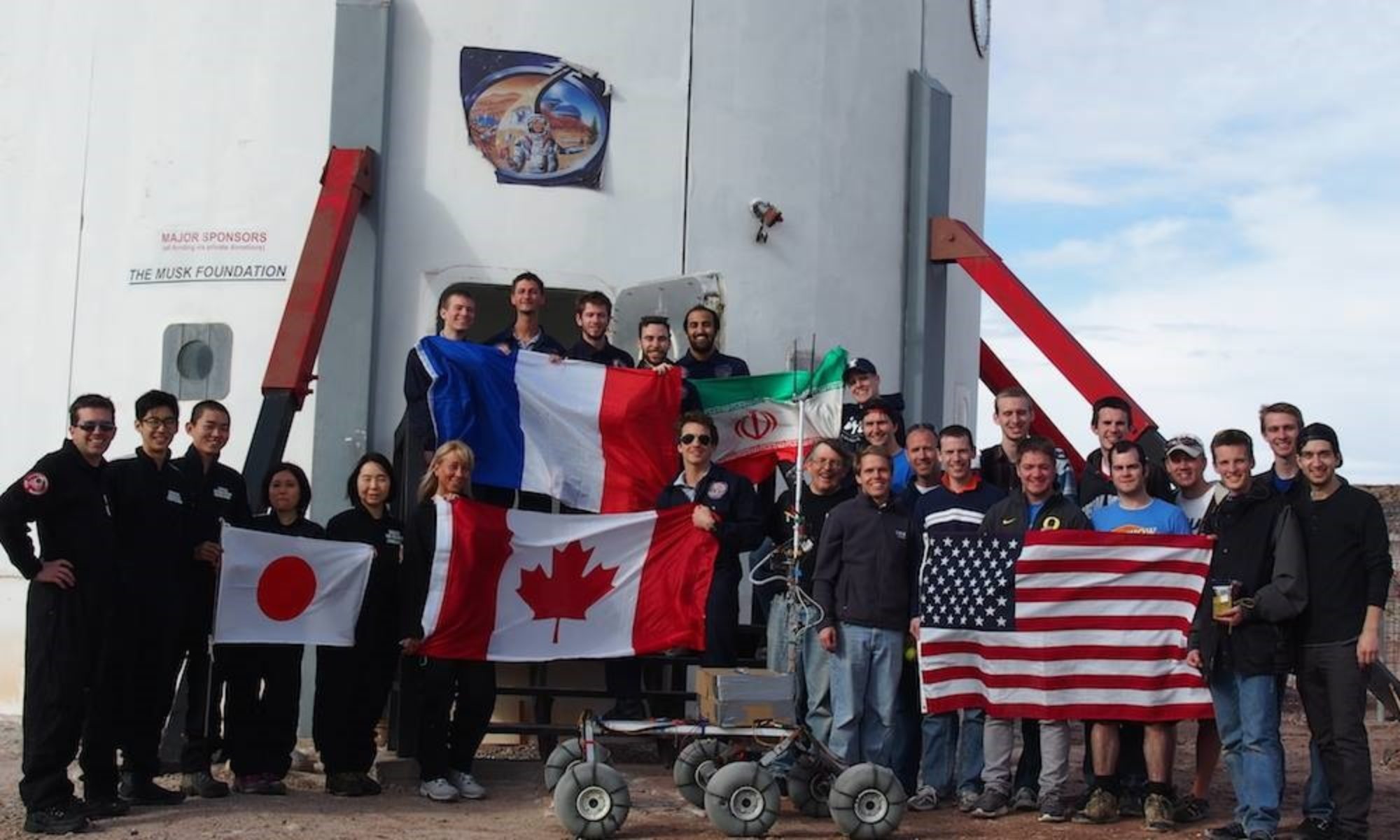

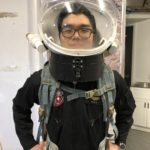
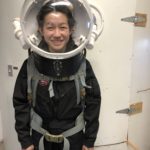
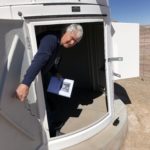
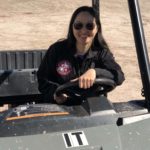

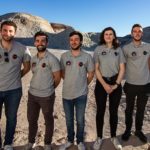
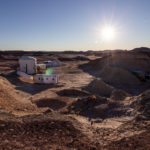
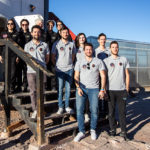
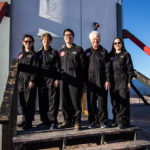
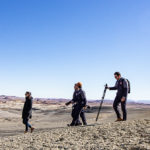
You must be logged in to post a comment.